Achieving alignment and ensuring that every team in an organization serves the same organizational goals is more important now than ever. This is where cascading goals come in. Cascading goals are a strategic approach to setting goals that aim to create actionable objectives for high-level entities.
This method’s sole purpose is to make sure every employee can understand their individual contribution through their goals. The beauty of it all comes from the cohesive and motivated nature that cascading goals embody. This way, they support open and clear communication and foster accountability in the process.
So let’s dive straight into how you can utilize cascading goals for your organization and strive for success in the most efficient and harmonious way possible!
Understanding Cascading Goal Structures
The understanding you’ll have of cascading goal structures will be crucial for effective action. Without a clear view of cascading goals, the measurability and alignment of your strategies for your organization will be in jeopardy.
Definition of Cascading Goals
Cascading goals are a strategic framework for organizational objectives and are a systematic series of goals broken into specific and actionable targets for the different levels of an organization. This is a process of translating high-level objectives into smaller targets in an effort to align the overall strategy of the entity at all levels.
This approach to goal setting ensure that each member of the workforce in an organization has a clear understanding as to what actions in the company are serving which goals. This way, cascading goals also have a way of promoting accountability and coordination, as well as alignment.
How Cascading Goals Create Alignment Within An Organization
Alignment is the heart and soul of cascading goals simply because cascading goals’ entire purpose is to ensure alignment and use the efficiency created by that alignment in order to reach organizational goals.
Bigger goals are broken into smaller tasks and objectives for the subgroups of an entity to make sure it’s all a well-oiled machine that can perform with the absolute best efficacy through the understanding of their purpose as goals cascade through the organization at each level.
As this clearly communicated system allows, organizations utilize cascading goals in a way where everyone is on the same page and know exactly how their roles, qualifications, and competencies play a part in the bigger picture.
How To Implement Cascading Goals In An Organization
The best way to implement cascading goals and keep on top of all of your data regarding them is to utilize the right software. Regardless of your goal-setting methodology, your goal setting tool needs to be fully integrated into your central communication and collaboration platform to ensure visibility.
So today, we will be showing you how you can create a cascading goal structure inside a goal and OKR management platform that integrates perfectly into Microsoft Teams.
Teamflect is an all-in-one performance management solution inside Microsoft Teams, designed specifically for accessibility and seamless integration. Let’s explore how you can utilize Teamflect in your favor!
Setting Cascading Goals & Establishing Goal Hierarchy With Teamflect
Creating a cascading goal structure for your team is a relatively simple endeavor. The first thing you will need to do is head over to Teamflect’s goals module. This is where you can view all the different goals in your team, organization, or you as an individual.
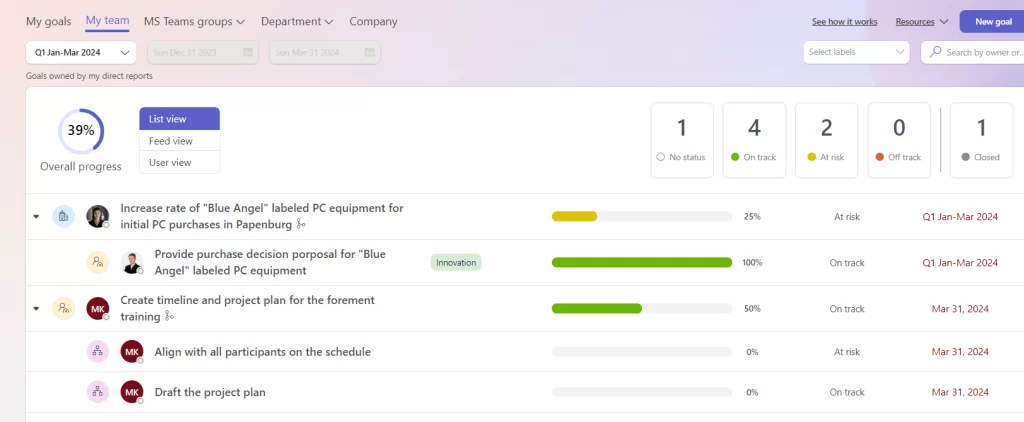
Once you’re in the goals module you can click on the “new goal” button on the upper right-hand corner. This will lead you to the standard “Goal Creation” pop-up.
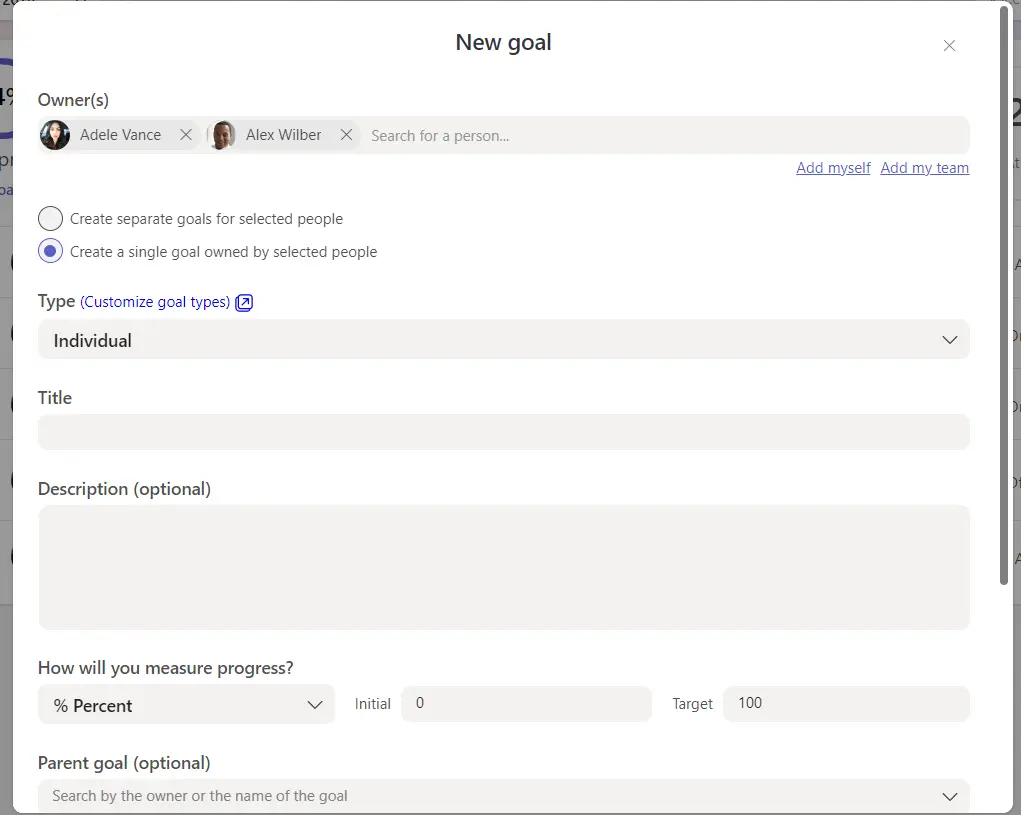
Once you’re inside the new goal you’re setting up you are met with a highly customizable module that allows you to;
- Assign goals individually or as a group for multiple people
- Choose between different types of goals such as individual, group, department, or team.
- Customize how you wish to track the progress of the goal according to your choice of metric
- Tie your goal to a parent or sub-goal to create a cascading goal structure throughout your organization.
Creating Subgoals & Related Tasks
As we mentioned just now, when you’re inside a specific goal that you’ve created, you also have the option to link other goals to your parent’s goal.
By using this feature you can make sure that the structure of your goals is linked with its related counterparts, supporting the clearly aligned nature of cascading goals.
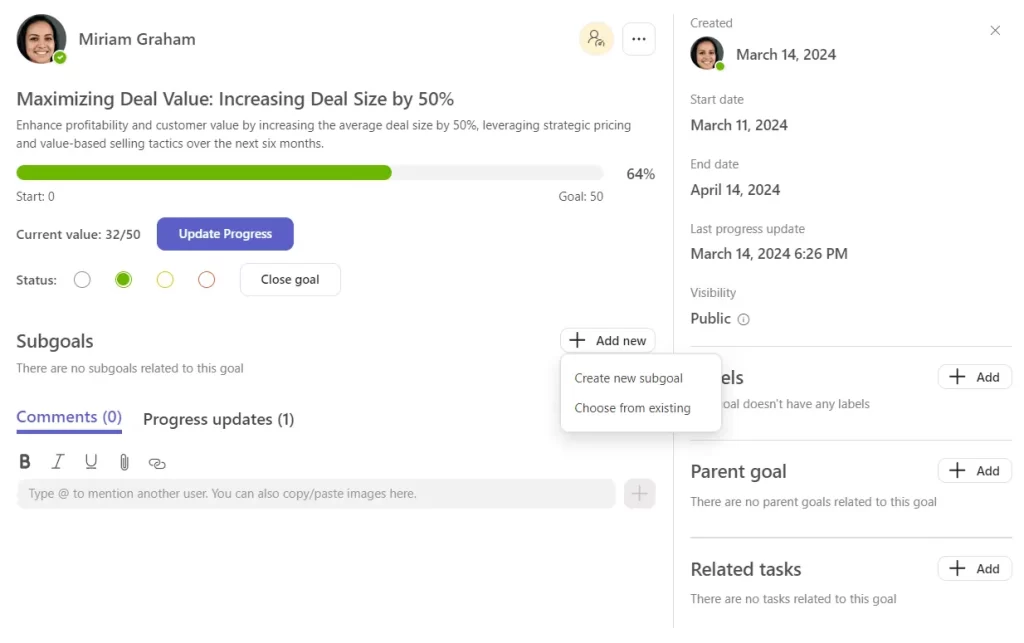
Tracking & Evaluating Goals
Of course, the job is not done once you’ve created and linked goals. Just as important, if not more, is the tracking and evaluating process of your goals so you can utilize your results in the most effective way possible.
Automated Goal Check-ins
Teamflect allows you to do just that with the goal check-in feature! Goal owners receive notifications to update their goal progress at intervals of the goal creators voice.
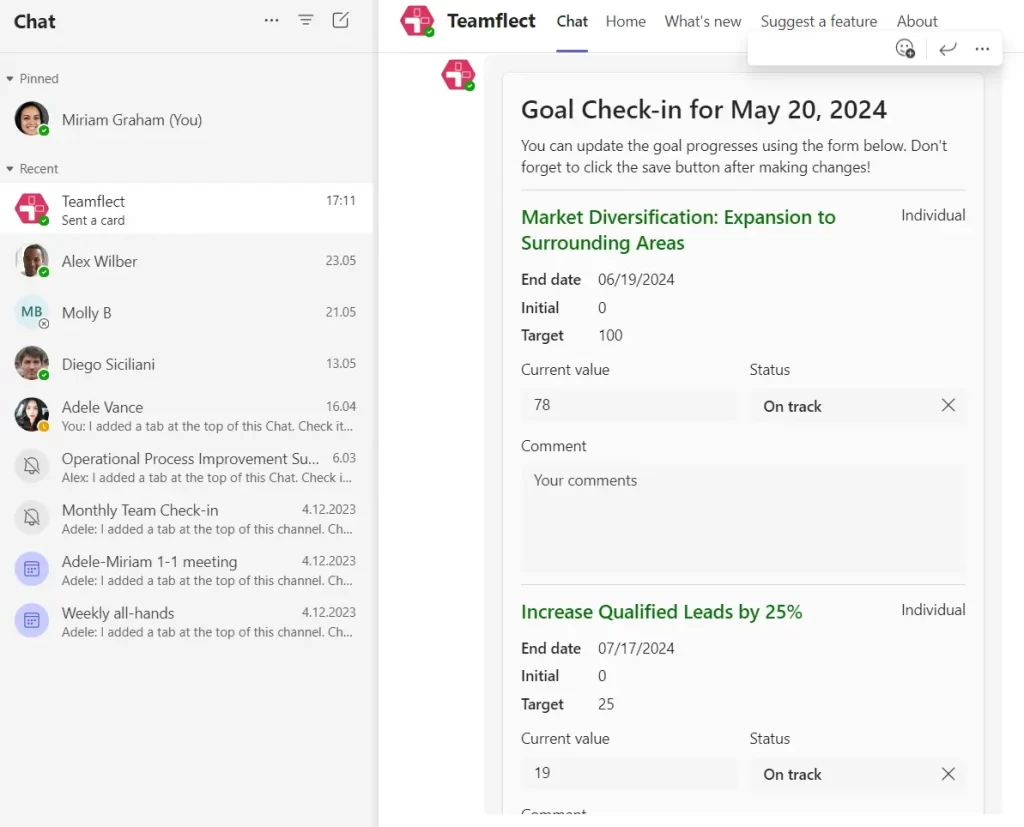
After you create your goals, goal owners will receive goal check-in adaptive cards periodically. These adaptive card will show up inside the Teams chat and can be filled out in seconds!
Using this seamless integration, goal owners will be able to update right inside the chat and you’ll be able to ensure that your goals are tracked consistently to make sure your data stays up to date!
Goals Inside Performance Reviews
Last but not least, we’ve of course considered implementing your goals and the insights you’ve been gathering in our performance review module. So head over to the reviews tab and click on the review of your choice.
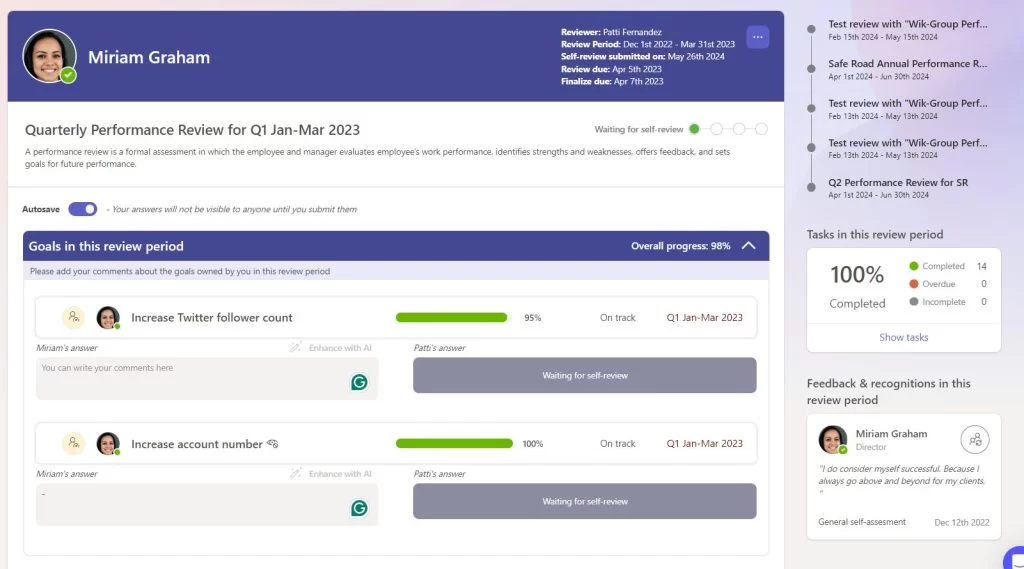
When conducting performance appraisals, the full range of Teamflect’s incredible features are on display. Reviews in Teamflect can have a section at the very beginning where the reviewer and the reviewee go over the goal progression/ goal completion rates to see how the individual being reviewed has performed!
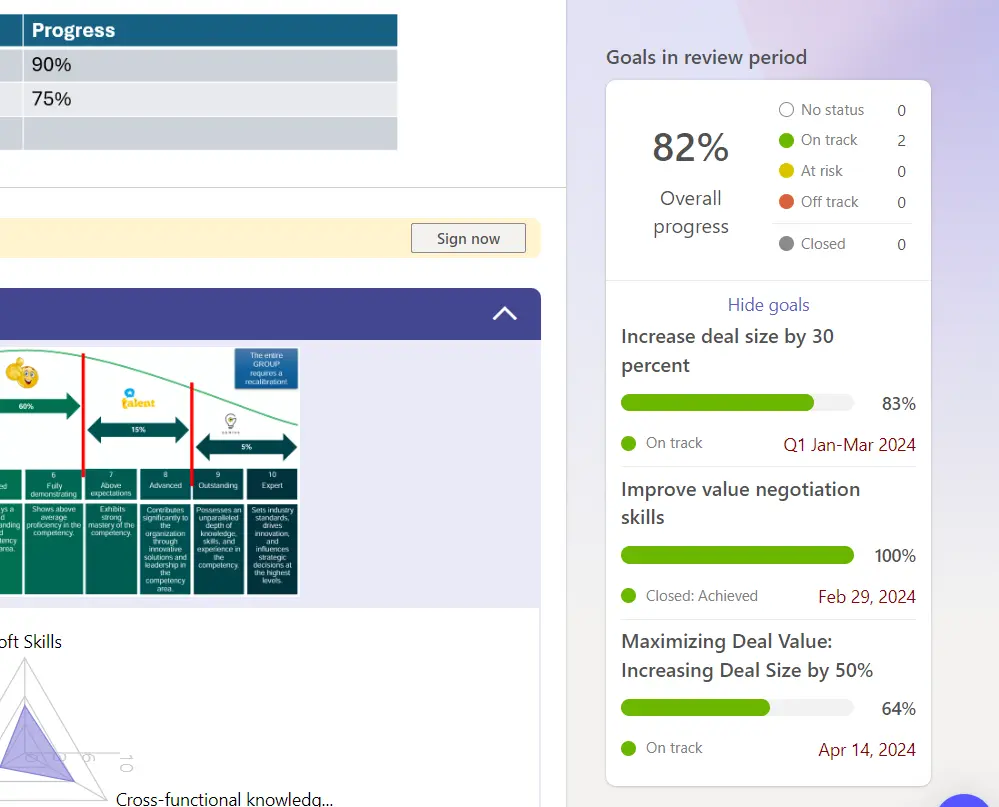
On the right side, you can see the current state of the goals that were attached to the review and simultaneously see the progression, as well as the relevant objectives that will affect your evaluation during your performance review process.
By implementing the two features together, combined with our AI assistance integrated inside the module you can further analyze/summarize the findings, you’ll be able to make the most informed evaluation through data-driven insights, making sure to set your course for the future with the utmost efficacy and accuracy!


